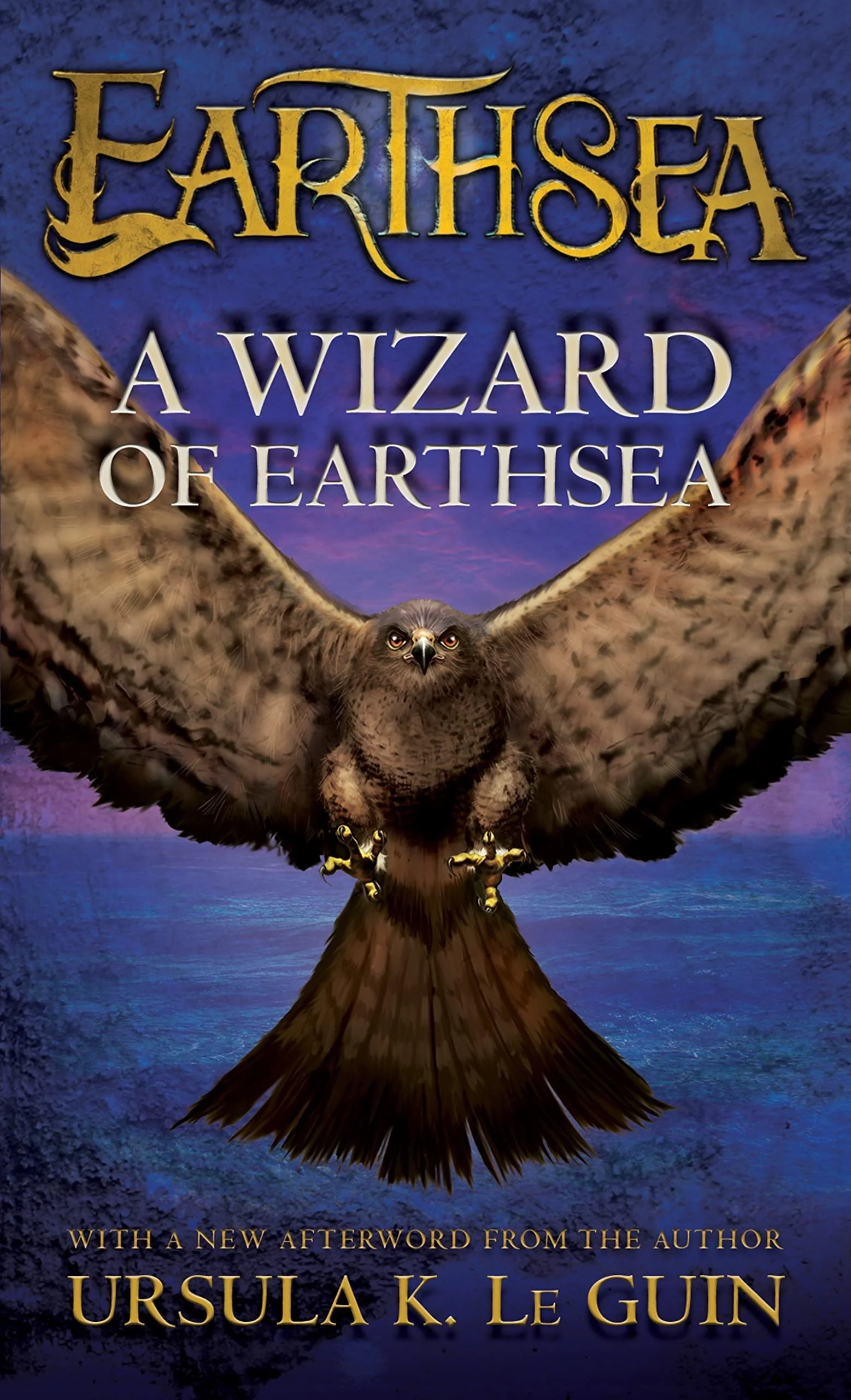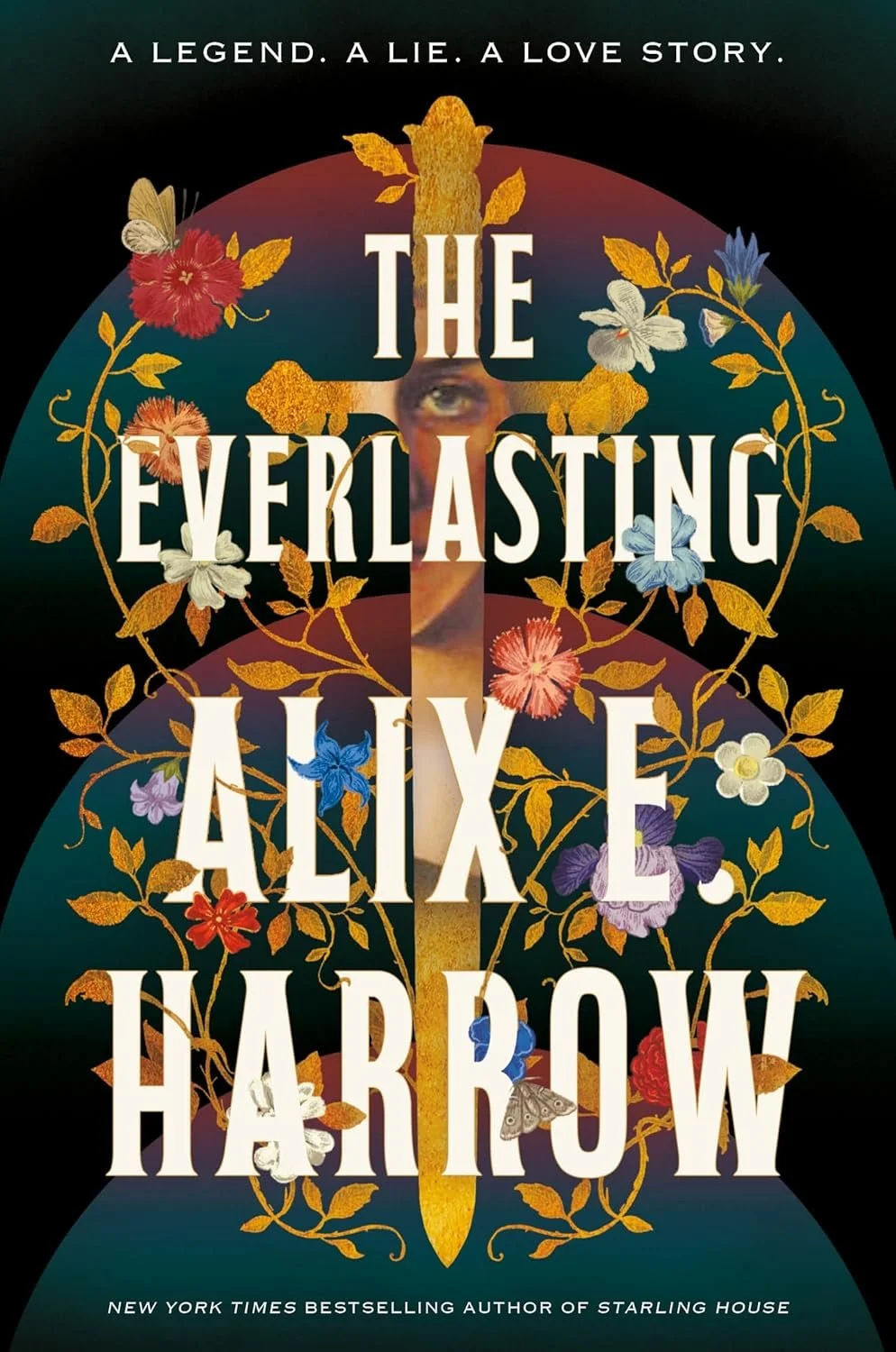A Wizard of Earthsea — Book Review with Content Warnings
Author: Ursula K. Le Guin
Genre: Classic fantasy, Teen fantasy, Literary fantasy
Series: Earthsea Cycle #1
Age Rating: Teen
Synopsis
As a young man, Ged is trained as the greatest sorcerer in Earthsea, but his pride is his downfall. He accidentally unleashes a powerful evil and must defeat it before it destroys the world.
Content Warnings
General Rating: Family Friendly/Clean (PG)
Spice Rating: None
Violence Rating: Mild—multiple clashes between Ged and his opposition, including magic and sword use
Profanity Rating: None
Other Trigger Warnings: bullying, attempted murder
Overall Rating: 4/5
A sweeping epic written beautifully in resonant, intense prose. Le Guin is a writing master; this tale is just the beginning of Ged’s story, but it is told with quiet intensity that draws the reader in and leaves them wanting more. This is a staple for all fantasy readers.
What I Liked
The worldbuilding: Le Guin creates a world of epic, mythic proportions seemingly effortlessly. Each location felt tangible in its descriptions of culture, geography, and language.
Ged’s personal journey: Not too many contemporary fantasy novels explore the inward journey to defeat one’s own demons; Le Guin does so masterfully, harking back to a time when fantasy explored much of the inward journey. Ged’s journey, while largely introspective and isolated from other characters, is harrowing.
Normalizing non-white protagonists: In the afterword, Le Guin comments on the lack of social acceptance of Ged as a non-white protagonist at the time of writing in 1968. Today, non-white protagonists are celebrated, but this was not so at the time of the first publication of The Wizard of Earthsea. Le Guin was ahead of her time, addressing issues of racial superiority in her subtle, understated way.
What I Didn’t Like
Broad, sweeping narrative: Unlike most popular novels today, A Wizard of Earthsea invites the reader to slow down and appreciate the journey on a micro level. I liked that, but I found that, on a macro level, the narrative often leapt ahead in seasons and years, and I wanted to linger instead of moving forward. I wanted to read more about Ged’s experience with the dragon, with the isolated islanders, and his friendship with Vetch.
Themes and Reflections
Facing one’s demons: Ged unleashed a shadow into the world, and to defeat it, he must face his own demons of pride and ego. He is transformed from a brash, proud student to a thoughtful, reflective wizard who has faced his deepest darkness.
The power of friendship: Vetch is a loyal friend who accompanies Ged on the most dangerous part of his mission. He does not abandon Ged, even when it endangers his own life. True friendship is necessary to walk through the darkest places of life and emerge alive.
“To Vetch, watching in terror through the dark twilight from far off over the sand, it seemed that Ged was oversome, for he saw the clear radiance fail and grow dim.”
Writing Style
Restrained, stark prose
Measured, sprawling pace
Tense, haunting atmosphere
Archetypal, compelling third-person POV
Formal, rhythmic dialogue
Sprawling, imaginative, immersive worldbuilding
Evocative and transformative narrative
Tropes
Humble beginnings
Quest
Man vs. Self
Tragic flaw
Sidekick/companion
Books Like This
The Lord of the Rings by J.R.R. Tolkien
The Name of the Wind by Patrick Rothfuss
Publisher Info
Publisher: Kindle edition by Clarion Books
Release Date: September 11, 2012; original publication year 1968






Book review with content and trigger warnings for Hemlock & Silver by T. Kingfisher